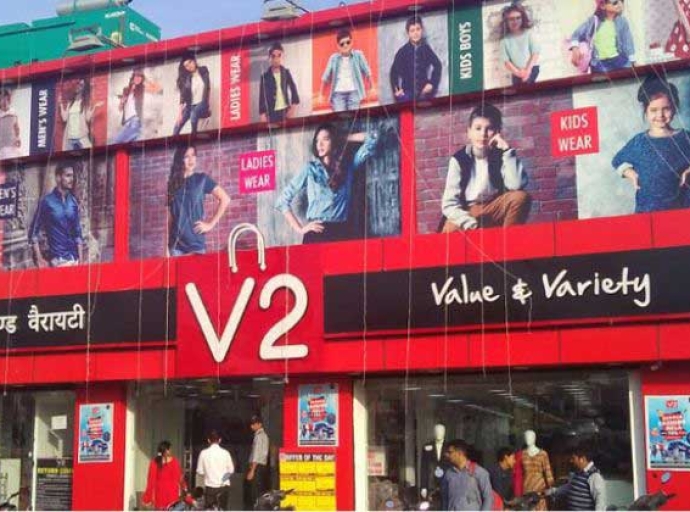22 January 2023, Mumbai
The global population faces significant health, economic, environmental, and social issues due to the COVID-19 virus' rapid proliferation. One of the most challenging issues that humanity has faced in contemporary times can be attributed to this pandemic.
The outbreak impacted the majority of the international supply networks in South and Southeast Asia. The second-highest number of coronavirus cases worldwide had been reported in India, creating both new potential and challenges for the textile and apparel/garment (T&C) sector.
The global economic downturn was evident, but its effects were most severe in emerging economies but post Russia @ war the developed world economy visibly has taken a deep hit.
The task is made more difficult because social and healthcare systems in developing nations need to be more vital to handle the enormous population. The nation's ongoing lockdowns had wholly halted the textile and garment industries.
But since then Indian textile industry has been the epitome of ''Resilience To Resurgence" all thanks to better handling of the pandemic by Indian authorities.
Setbacks after the pandemic
The sector has faced significant issues recently, including negative growth patterns, international trade imbalances, unemployment, income, poverty, manufacturing closures, retail closures, workforce displacement, and shortages.
In the context of the textile sector's socio-economic primacy for the Indian economy, indeed COVID-19 has rocked the boat as a bigger picture threatening to totally derail the socio-economic life of people globally jeopardizing the employment of millions of trade workers and injecting the sense of trepidation amongst the workforce and, compounded by elevated interest rates, hiked inflationary costing pressures hurting the economic growth revival of the country.
According to Sahoo and Ashwani, if the current scenario persists, production might drop from 5.5 to 20%, exports from 13.7 to 20.8%, imports from 17.3 to 25%, and MSME net value added from 2.1 to 5.7. The industry could not have predicted that it would experience such a protracted shutdown in the early stages of the pandemic. Consumer consumption has also been declining substantially for the first time in recent decades, which has a worsening effect.
The required lockdowns could significantly impact growth because the Indian company development strategy focuses on export-led growth. The value chain analysis method is used in this essay to examine each stage of the value chain and highlight both the advantages and disadvantages of the current situation.
Recent research has focused on the pandemic's effects on the sector. However, this study takes it further by digitizing the value chain and putting the model for future shocks into practice. The author has collated practical information from academia, research, and industry to provide managerial solutions to the stakeholders in the value chain.
Disrupted textile supply chains with the changing geopolitics
Textile supply chains have been greatly impacted by the shifting geopolitical landscape. The COVID-19 pandemic has exposed the vulnerability of global supply chains, particularly in the textile industry. With border closures and restrictions on movement, suppliers have struggled to meet demand, leading to delays and shortages in the supply of raw materials. In addition, the trade tensions between major economies have disrupted the flow of goods, causing uncertainty in the industry.
The US-China trade war has forced companies to consider alternative sourcing options, leading to a shift in production to countries like Bangladesh and Vietnam.
Furthermore, the increasing focus on sustainability and ethical production has added another layer of complexity to the already disrupted supply chains.
Brands are now under pressure to source materials from eco-friendly and fair trade suppliers, leading to a need for more transparency and traceability in the supply chain. Overall, the changing geopolitical landscape has had a significant impact on the textile industry and its supply chains.
Companies must now adapt and find new ways to ensure the continuity of their operations in a constantly evolving market.
The ministry’s responsibility
The country's textile manufacturing accomplishments are the textile ministry's responsibility. Eleven cities—Kolkata, Mumbai, Tirupur, Ludhiana, Indore, Bellary, Jaipur, Bangalore, Chennai, and Delhi—account for the majority (80%) of the nation's apparel industry.
The textile and apparel industry's fiber, yarn, fabric, and garment segments are healthy. A well-organized textile and apparel industry guarantees robust domestic retail. India's young, educated middle class is one of the largest markets in the world.
The retail sector is well-stocked, with domestic and international brands in all fashion divisions. The country is undergoing a digital revolution, which has led to an apparent increase in internet sales.
The COVID-19 issue impacted the whole Indian fashion and textile industry. The impact of a crisis can be understood by looking at both the supply-side aspects and the demand-side elements, according to Kanupriya (2021).
Unleashed Story
Due to canceled contracts and a lack of raw materials, manufacturing in Asia halted. The required lockdown forced thousands of textile and apparel manufacturers to close, severely disrupting supply and demand.
According to research by the apparel export development council, 83% of export orders had been fully or partially canceled. The purchasers canceled or ceased placing fresh orders, significantly impacting the apparel/clothes export industry. This resulted in an immediate increase in inventory and manufacturing overhead expenses.
Opportunity Knocks Indian Doorstep; With China Plus one, and remarks coming from Paytm founder articulating India is in a unique position and is one of its kind in the current global market and, echoing the same confidence quite recently Aditya Birla, chairman Kumar Manglam alluded that in the world of 'Winners & Loosers' India's rise "Beyond'+1" is credible; as India becomes a serious player in the global textile economy, factually being both a supplier hub and a significant consumer.
Therefore, there is an absolute need to think today ‘out of the box’/lateral thinking for tackling this unparalleled crisis sort of never seen before.
Latest Publications


































